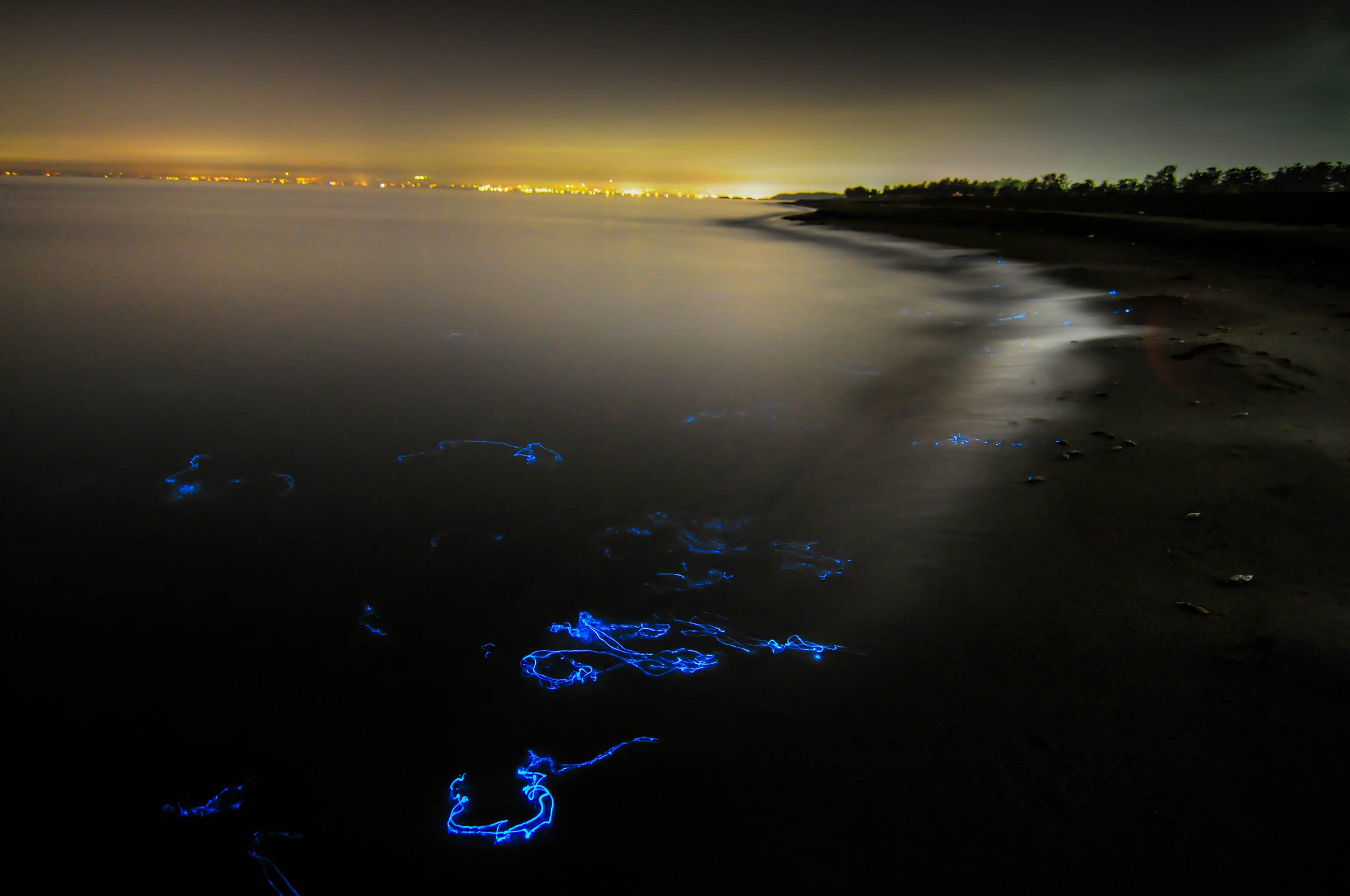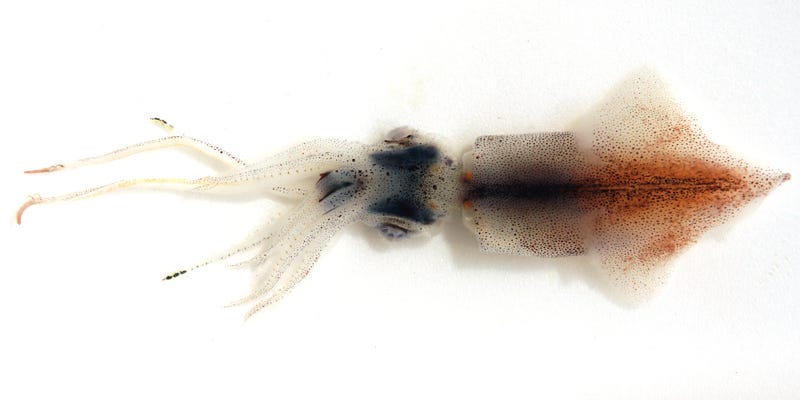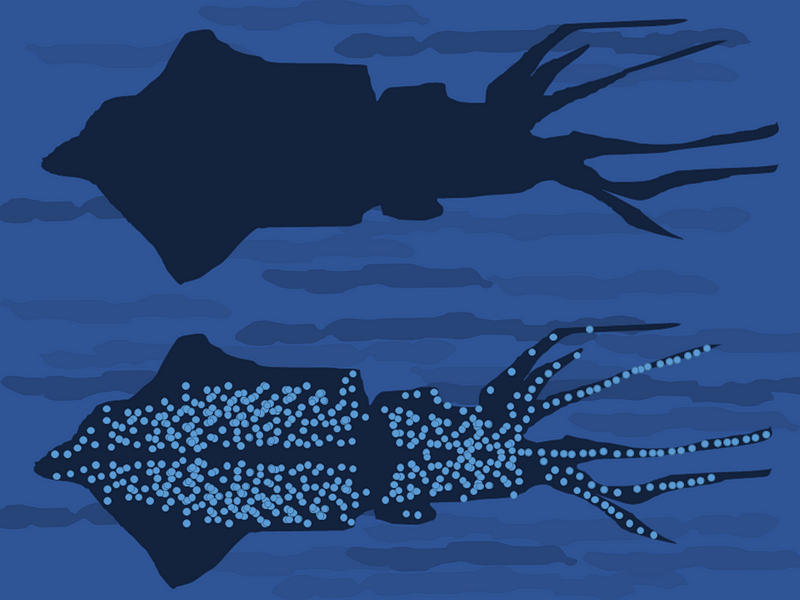
We’re diving deep again this week in our journey looking at bioluminescence. We’ve looked at cephalopods before in a story from Season 4 (Mimicry) and another from Season 6 (Play) and now we’re going to look at a species that glows. There are actually several species in various cephalopod groups that exhibit bioluminescence, but we’ll focus on a species called, appropriately, the firefly squid, Watasenia scintillans.
Squid are related to octopus and relatively similar in physiology. Squid bodies tend to be more streamlined for greater speed. They also possess ten limbs to an octopus’ eight. Both have eight arms, but squid (and cuttlefish) also have a pair of slightly larger limbs called tentacles. The technical distinction between an ‘arm’ and a ‘tentacle’ is not particularly important for our purposes and did not become common practice in scientific literature until the early 1900s.

Firefly squid are relatively small, only about 7cm long at maturity and live for one year, dying after they spawn (a common trait in cephalopod species). These spawning events are a spectacular light show as the squid, much like lanternfish, will move from the depths to the surface once night falls. Toyama Bay in Japan is a well-known spawning ground for this species and is considered a Special Natural Monument by that country for this reason. The top photo was taken in that general area.
Firefly squid have light-producing organs covering their entire body and can control them individually. This allows them to be used in a versatile number of ways. They can flash the lights to attract prey in the form of small fish. It can also use its bioluminescence to help attract a mate. However, the function that I personally find the most intriguing is for camouflage purposes.
It might seem counter-intuitive that emitting a bright light from your body can serve as camouflage, but it is actually only going one step further than the typical basic and widespread camouflage seen in both aquatic and terrestrial environments. This is called countershading and involves tailoring the pigments and color gradients of an organism so that the top or dorsal half is darker and the bottom or ventral half is lighter. Thus, the light bottom will blend in with the light sky and the dark top with the ground or the depths. This makes it that much more difficult for either a predator or prey to notice the organism.
Squid and other bioluminescent organisms can take this to the next level by adding light to the equation. As shown in the diagram below, the light producing organs on top of the squid remain dark, while the ones on the bottom illuminate. Because of their excellent vision, the squid can tailor the color and brightness to match the light coming from the surface. This is known as counter-illumination.

Octopus often steal the metaphorical cephalopod spotlight with their displays of intelligence, as mentioned in the previous stories linked above. Their particular physiology is well-suited for more dramatic demonstrations, at least compared to their squid cousins. However, the squid should not be overlooked or dismissed as merely food in the form of ‘calamari’ (though it is somewhat apt for the firefly squid, which is fished commercially in Japan, averaging several thousand tons per year). For one thing, only a small number of octopus species possess bioluminescence, while it is much more common in squid. Their ability to mimic and reflect the color, brightness, and patterns of light is something to be impressed with.
Countershading does not take any extra effort. It exists and is widespread because there is an easy evolutionary benefit to possessing it. For the most part, it does not need to be maintained by an organism throughout its lifetime. Counter-illumination is different. It takes precise effort to copy the surrounding light characteristics. A squid might not be able to escape its enclosure in search of food like an octopus can, but that doesn’t mean we should underestimate their intellect.
We’re already halfway through Season 8. I hope you all are enjoying going back and forth between terrestrial and marine examples of bioluminescence. I wanted to give some variety as we progressed through the stories to be shared and avoid getting stuck in a rut in terms of the environments I got to talk about. Let me know if you think it works well so I can continue to tailor the flow of future seasons. If you enjoy my writing, please consider sharing it with others you think might also find it worthwhile.